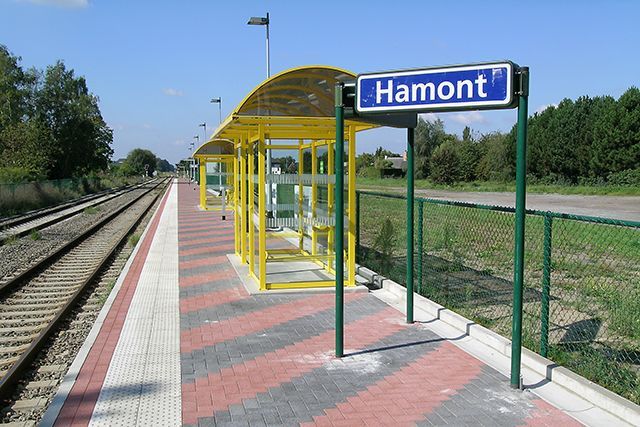
A direct connection between Eindhoven and Düsseldorf is approaching, but for the line between Antwerp and Brussels, this is a different story. Faster connections via Breda are being developed, but there is another option. The coalition agreement states that the Hamont-Weert railway line is to be ‘reactivated’.
“Following the Belgian investment on the Antwerp-Hamont line, the connecting Hamont-Weert section will be activated for passenger trains, with co-financing from regional authorities.”
But what does this mean? When can it really become attractive to first take the train to Weert in Eindhoven to travel from there to Brussels? Eurekarail has done some research.
It’s all about 9 kilometers of existing track between Weert and the Belgian railway station of Hamont, which is to be electrified. For this purpose, catenary wires will have to be stretched over 9 kilometers and approximately 135 catenary portals will have to be installed. At Weert station, some adjustments are also needed to host the Belgian train.
Voltage
In addition to catenary wires and portals, the national rail managers ProRail and Infrabel will have to consider the power supply on the route. In the Netherlands, trains run on 1500 volts direct current, while in Belgium trains run on 3000 volts direct current. There are various solutions for this. A possible solution could be to pull 3000 volts of direct current through to the Weert station. Then a train can run which is suitable for 1 type of current. Investigations are now being conducted into this. The final choice will be made on the basis of various scenarios by the national railway managers in consultation with the relevant ministries, such as the Ministry of Infrastructure and Water Management. Of course, in addition to technology, there’s also a wish for the most cost-effective solution.
Cost
Belgium received a European subsidy of 18.2 million euro last summer for electrification of the Mol – Hamont section, the last unelectrified part of the section between Antwerp and Hamont. The whole job is estimated to cost 46.4 million euros, but the Belgian mobility minister, Francois Bellot, expects a payback effect because it is cheaper to run electric trains than the current diesel trains. In the Netherlands, the costs of electrification and installation of catenary posts are financed by the Ministry of I&W, the Province of Limburg and the municipality of Weert.
2020
Electrification of Mol – Hamont in Belgium is planned by Infrabel from the second half of 2018 until the end of 2020. Smooth cooperation and decision making may even enable to combine the electrification of Mol – Hamont, and Hamont – Weert into one contract, so the entire line will be electrified by 2020. In order to make these ideas possible, the province and the ministry are having a discussion.
Carrier
It is also important that there is also a transport operator who wants passenger trains to run there. For this reason, the Ministry of Infrastructure and Water Management will shortly be consulting with the Belgian rail transport company SNCB. SNCB trains now drive to Hamont, but have to stop there for more than 40 minutes before driving back to Antwerp. That provides time to drive back and forth to Weert, which is about 20 minutes away. SNCB will want to investigate the feasibility of the connection.



